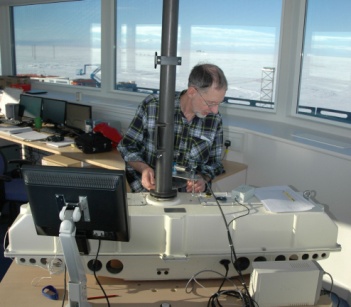Ozone Measurements in the Antarctic

Ozone is a gas consisting of three oxygen atoms and it is formed by the action of sunlight on normal oxygen. When ozone is found near the surface of the earth (such as in smog formed from car exhausts) it is a noxious substance. Much higher in the atmosphere, the ozone layer protects us from the harmful effects of ultra-violet radiation.
BAS scientists discovered the Antarctic ozone hole over thirty years ago and continue to study its annual formation and disappearance. The “Hole” varies in size and duration from year to year, depending on the “weather” in the upper atmosphere. The 2019 hole will be nearing its deepest as Physics at Work takes place - what will we see? Some ozone depletion is seen over the Arctic during the spring, and whilst it can be severe, as it was this year, no major ozone hole has so far formed there.
The physics that we will be looking at is optics which are found inside the instrument we use in Antarctica to measure ozone and how optics can explain how we focus light using lenses, reflect light using mirrors and split up light into a spectrum using prisms.
Some topics to think about before coming to the exhibition:
- Differences between the Antarctic and Arctic.
- Many environmental changes will take place over tens of years, but the measuring instruments may only operate over a few years. How can we tell if or when there has been a significant change in what we are measuring?
